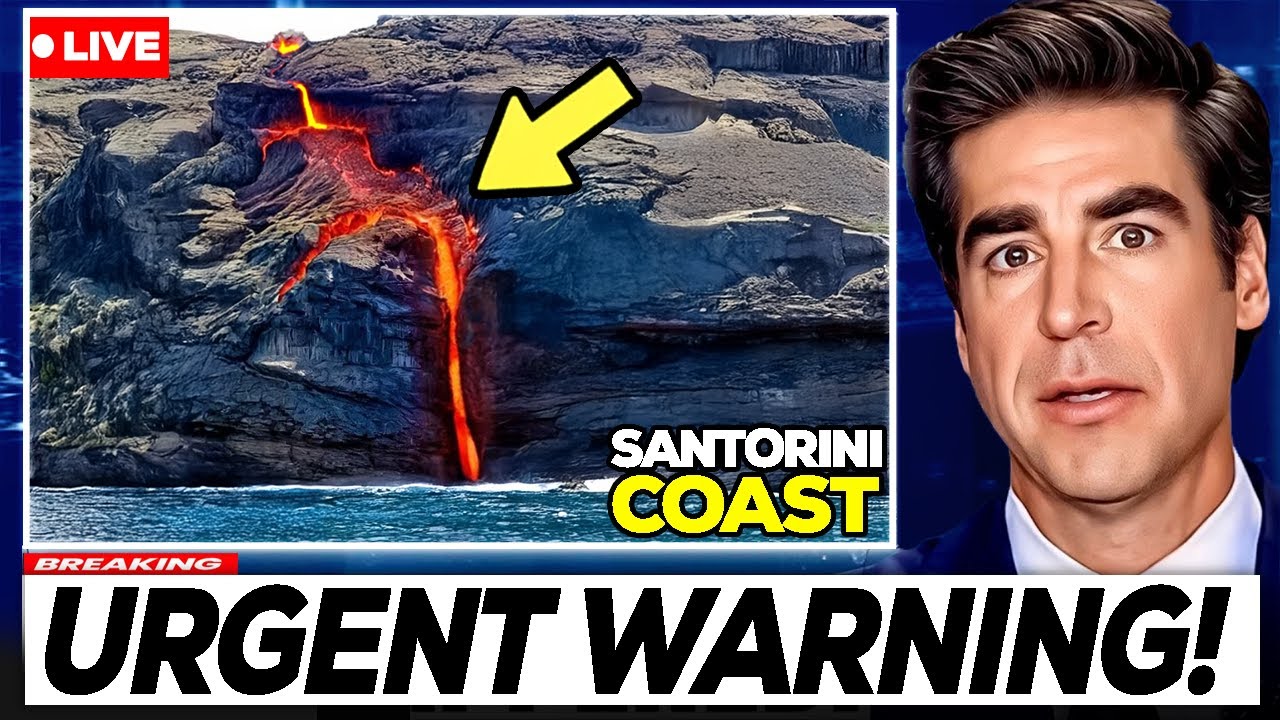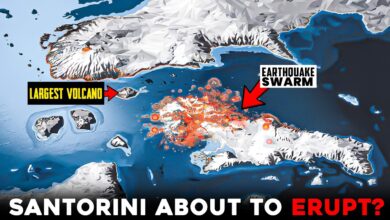Santorini Volcano’s Magma Vanished —Something TERRIFYING Is Happening Right Now?

Greek authorities have declared a state of emergency after a powerful earthquake rocked the island of Santorini. The quake, which measured 6.8 on the Richter scale, struck in the early hours of the morning, sending tremors across the Aegean Sea and damaging buildings, roads and key infrastructure.
The quake originated on a fault line beneath the Santorini caldera, an active volcanic system that last erupted in 1950, according to Greece’s National Seismological Institute. Geologists have warned that increased seismic activity in the area could be a sign of deeper disturbances. In recent months, researchers have detected an increase in underground lava flows and unusual gas emissions, suggesting the volcano may be reactivating.
Local authorities have begun evacuating people from high-risk areas, especially in the towns of Fira and Oia, where several buildings have been severely damaged. Rescue teams and the Greek army have been deployed to assist in the rescue, provide medical aid and assess the safety of infrastructure. Scientists are closely monitoring the situation using satellite imaging technology, seismic sensors and heat maps to detect any signs of an imminent eruption.
The Greek government has issued a travel advisory, asking visitors to avoid visiting Santorini until further notice. The Santorini volcano is part of the Hellenic Volcanic Arc – one of the most seismically active areas in the Mediterranean. Experts fear that if the earthquakes continue, it could destabilize the geological structure of the island, leading to the risk of landslides, tsunamis or even a major eruption.
### **Lava disappearance and magma dike formation**
Recent observations indicate that about 3 million cubic metres of lava have disappeared from the magma chamber under Santorini. This disappearance is linked to the formation of a magma dike – a vertical fracture that allows lava to move horizontally through the Earth’s crust.
The appearance of a magma dike is an important development, reflecting a dramatic change in the underground magma system. Magma dikes form when lava intrudes into cracks in the surrounding rock, often due to increased pressure in the magma chamber. This process can lead to surface deformation, increased seismic activity and, in some cases, eruptions if the lava reaches the surface.
Geophysical data from GPS and satellite radar devices show that Santorini’s surface has undergone slight uplift, a sign of underground movement. Additionally, seismometers have recorded an increase in small earthquakes, which may be related to the lava breaking up the overlying rock as it moves. These signals suggest that the lava is not simply disappearing, but is being redistributed within the volcanic system.

### **Concerns about Columbo**
Another area of concern in the Santorini volcanic system is Columbo, located just 7 km from the coast. Studies over the past year have found that a shallow lava chamber beneath Columbo is slowly accumulating lava, reaching levels similar to those seen before its largest eruption in 1650.
Scientists are particularly concerned because Columbo has a history of very violent eruptions, largely due to the interaction of lava with seawater. Seismic activity near the main crater and nearby secondary vents has increased significantly, suggesting that pressure is building up on the seafloor.
To improve monitoring capabilities, several new seismic stations have been installed over the past year, including four recent additions. However, the lack of data-sharing agreements between research institutions and fragmentation of information have made overall analysis difficult. The absence of a central monitoring agency makes it difficult to integrate seismic, geophysical, and geothermal data, hampering accurate forecasting.
Scientists are pushing for the deployment of underwater pressure sensors and ocean-floor seismometers to collect more data on the dynamics beneath Columbo Crater. They also propose installing gas monitoring stations to detect increased gas emissions, a common precursor to volcanic activity.
If there is further evidence of an eruption risk, authorities may need to take precautions such as maritime traffic warnings and enhanced preparedness for coastal communities.
**Challenges in monitoring volcanic activity**
One of the major obstacles to monitoring volcanic activity on Santorini is the lack of consistency in GPS data. Continuous geodynamic measurements are crucial for detecting ground deformation, which helps determine the movement of lava beneath. However, the number of stations has been greatly reduced since 2011-2012, making monitoring data less accurate.
To address this, scientists are calling for more GPS stations to be redeployed, especially at the Santorini crater and surrounding area. Expanding the network would improve the ability to detect ground movements, distinguishing between small changes and more dangerous signs.
Recent seismic data and satellite imagery suggest that the amount of lava accumulated under Santorini is around 6.5 million cubic metres, at a depth of 4.3 kilometres. While this number is not too large compared to the eruptions in Iceland, Santorini’s lava is highly viscous, which can easily lead to gas accumulation and powerful explosions.
Is a new eruption imminent?
Recent data shows that about 3 million cubic meters of lava have left the chamber, raising concerns about a new lava intrusion. It is unclear whether the magma chamber is undergoing a cycle of accumulation and release or is preparing for an eruption.
While there are no immediate signs of danger, scientists still emphasize the importance of constant monitoring to ensure the safety of residents and visitors to Santorini. Stay tuned for more updates on volcanic activity in the coming time!








